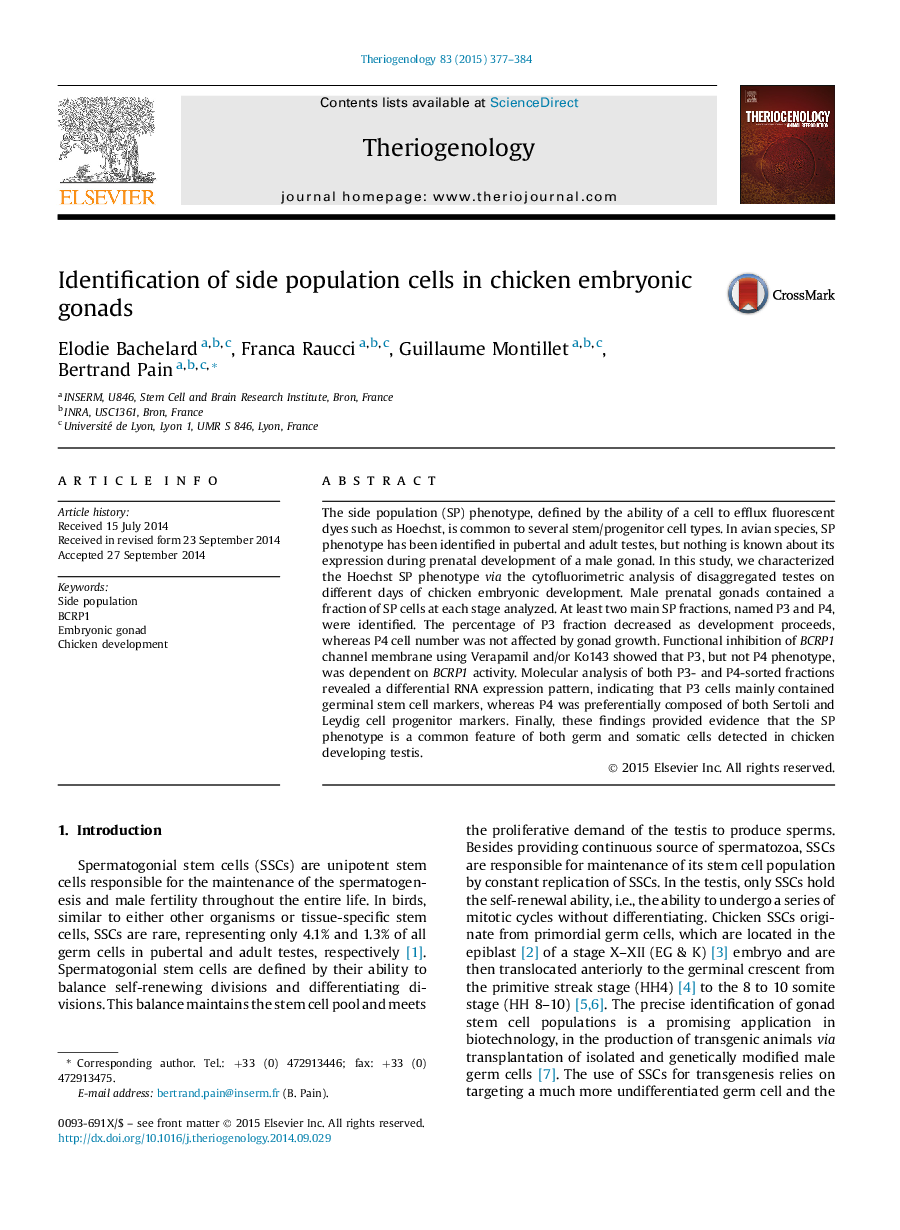| کد مقاله | کد نشریه | سال انتشار | مقاله انگلیسی | نسخه تمام متن |
|---|---|---|---|---|
| 2095039 | 1082067 | 2015 | 8 صفحه PDF | دانلود رایگان |
The side population (SP) phenotype, defined by the ability of a cell to efflux fluorescent dyes such as Hoechst, is common to several stem/progenitor cell types. In avian species, SP phenotype has been identified in pubertal and adult testes, but nothing is known about its expression during prenatal development of a male gonad. In this study, we characterized the Hoechst SP phenotype via the cytofluorimetric analysis of disaggregated testes on different days of chicken embryonic development. Male prenatal gonads contained a fraction of SP cells at each stage analyzed. At least two main SP fractions, named P3 and P4, were identified. The percentage of P3 fraction decreased as development proceeds, whereas P4 cell number was not affected by gonad growth. Functional inhibition of BCRP1 channel membrane using Verapamil and/or Ko143 showed that P3, but not P4 phenotype, was dependent on BCRP1 activity. Molecular analysis of both P3- and P4-sorted fractions revealed a differential RNA expression pattern, indicating that P3 cells mainly contained germinal stem cell markers, whereas P4 was preferentially composed of both Sertoli and Leydig cell progenitor markers. Finally, these findings provided evidence that the SP phenotype is a common feature of both germ and somatic cells detected in chicken developing testis.
Journal: Theriogenology - Volume 83, Issue 3, February 2015, Pages 377–384
